
Guests
- Umar LeeSt. Louis native, freelance writer, community activist. His new piece for The Nation is called “Why the Trump Rally in St. Louis was So Different”
In St. Louis, Missouri, another Trump rally made headlines Friday when 31 people were arrested. The cover of Saturday’s New York Daily News showed a bloodied African-American protester in St. Louis. The headline read: “Blood on Don’s Hands.” We speak with Umar Lee, a freelance writer and community activist in St. Louis. His new piece for The Nation is called “Why the Trump Rally in St. Louis was So Different.”
Transcript
AMY GOODMAN: And speaking about another defining moment in recent U.S. history, in terms of the killing of young black men, Michael Brown, which brings us back to St. Louis, Chicago, where another Trump rally made headlines Friday when 31 people were arrested. The cover of Saturday’s New York Daily News showed a bloodied African-American protester in St. Louis. The headline read: “Blood on Don’s Hands.” We are in St. Louis with Umar Lee, a freelance writer and community activist there. His new piece for The Nation is called “Why the Trump Rally in St. Louis was So Different.”
Talk about the Trump rally and then larger St. Louis-Ferguson politics today. Welcome, Umar.
UMAR LEE: Well, when Donald Trump came to St. Louis, he came in the context of 17 months of protests and organizing since the killing of Mike Brown and, you know, later on, Kajieme Powell and Vonderrit Myers. So this is the climate that Donald Trump came into—a well-oiled machine, a product of a lot of organizing. Now, just as people organized in opposition to police killings and broader institutional racism in St. Louis, another group has organized, rallied around the police, rallied around racial solidarity. And those are the forces that we saw rallying for Donald Trump at the Peabody Opera House. And those two communities came together inside of the opera house and on the streets of St. Louis.
AMY GOODMAN: So, explain what took place on Friday, just before Trump canceled the Chicago rally. What exactly happened in St. Louis?
UMAR LEE: Yeah, well, Trump supporters had spent the night in front of the opera house. Early in the morning, they were lined up around the street, thousands of Trump supporters. However, embedded within those supporters, there were activists from St. Louis, who were able to get into the opera house and able to cause several disruptions. You know, Trump never got more than two minutes to speak without interruption in St. Louis. So he was constantly interrupted in St. Louis. And Trump became very testy because of the disruptions, and he was harkening to the days when you could abuse protesters. He was praising the police, and he was giving very violent rhetoric in St. Louis. And he was very testy when he left.
And the tension was not just in the opera house itself; it was on the street, because most Trump supporters could not get in, so they were outside. And there were more protesters outside than there were inside, as well. So, both within the opera house there was a tension, because Trump was not allowed to go forward, and outside there was definitely a lot of conflict on the street between supporters and protesters.
AMY GOODMAN: For you to get in, Umar, what were you wearing?
UMAR LEE: Well, I actually was not able to get in. I was wearing a St. Louis Cardinals jacket and a Cardinals hat, just dressed like a good, old St. Louisan. And I was embedded, with my friend Sarah Kendzior, in with the Trump supporters and just kind of eavesdropping and hearing their conversations and their complaints against Black Lives Matter and political correctness and other things. But after being in line almost three hours, we weren’t able to get in. So, we actually stood on the steps of the opera house, where we listened to Trump on the loudspeaker. And we listened to the wild cheers of Trump supporters as he announced the building of a wall. And we saw the protesters clash with the Trump supporters. And many of those protesters, I recognized from Ferguson and had been out there since the early days of Ferguson.
AMY GOODMAN: Umar, you said, as you looked around at the Trump supporters, you thought about your dad. Explain.
UMAR LEE: Well, you know, my dad was a blue-collar guy, a factory worker from North St. Louis. And when I looked around the crowd, I saw guys who reminded me of his buddies. You know, these were middle-aged baby boomers. But there were also a lot of teenager Trump supporters and younger Trump supporters. But these are just blue-collar, white St. Louisans who very much have been in opposition to the Ferguson protest movement or very pro-police. And they see in Donald Trump—my father is not a Trump supporter, but they reminded me of him. But they see a guy who champions them, who champions the white working men, against ISIS, against the Mexican workers, against the African Americans, etc. They see a hero. But also, what I witnessed on the street was the protesters were younger, were more vibrant, were more full of life. And I saw a group of Trump supporters that looked like they were in a Viagra commercial, you know, looked like older guys with not a lot of energy and then younger guys who looked like they’re a little frustrated.
AMY GOODMAN: Now, Donald Trump has said he’s going to pay the legal fees of supporters, like the supporter in North Carolina who sucker-punched—
UMAR LEE: Yeah.
AMY GOODMAN: —a young African-American man when the security was taking the man out. And he hauled off and socked him. And then, afterwards, this supporter was interviewed by Inside Edition, and he said next time he would kill him.
UMAR LEE: Yeah, yeah.
AMY GOODMAN: He was arrested the next day.
UMAR LEE: Yeah, it’s absolutely ridiculous that Trump is—you know, he’s inciting this violence. And you even have Marco Rubio saying he’s afraid someone’s going to get killed at one of these rallies. And, you know, I think it’s a legitimate concern. When he’s saying he’ll pay the legal fees, what Trump is calling to is a champion: “Who is my champion? Who will represent me? Who will take out one of these protesters for me?” And I think we’re going to be looking at more violence, and this violence is being incited by Donald Trump. And it’s a very scary situation we have in this presidential nomination race.
AMY GOODMAN: Umar Lee, I want to thank you for being with us, St. Louis native, freelance writer, community activist.
UMAR LEE: Thank you.
AMY GOODMAN: We’ll link to your piece in The Nation, “Why the Trump Rally in St. Louis was So Different.”
UMAR LEE: Thank you.
AMY GOODMAN: This is Democracy Now! When we come back, we’re going to Florida, another of the major primary states tomorrow. Who gets to vote, and who doesn’t? Stay with us.

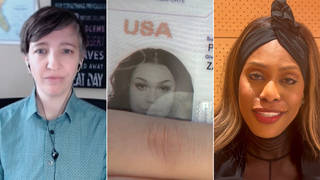
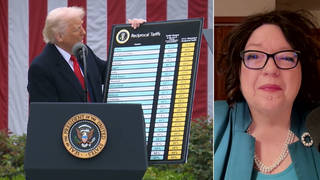
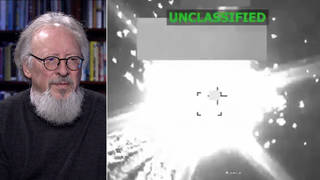
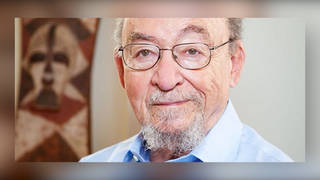





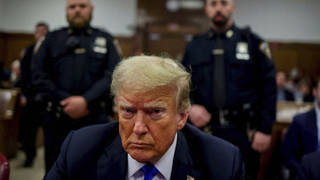
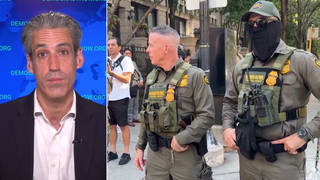
Media Options